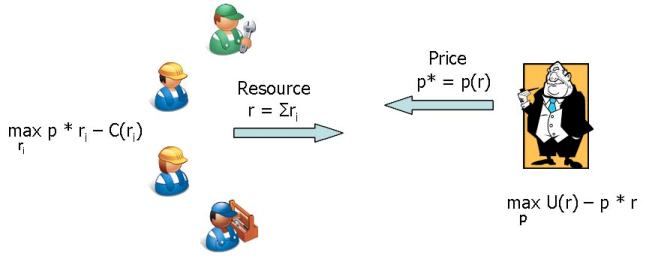We consider cooperative and noncooperative games between agents interested in trading computer-communication resources such as data rate, cache space, or CPU power. One of the agents represents a server that provides a computing service. The server needs a certain amount of resource in order to provide its service accordingly. The rest of the agents in the game represent clients that are willing to trade quantities of this resource with the server in return for profit. The clients and the server can play Stackelberg games where in one instance the server can be the leader of the game while the clients can be its followers. In the second instance under consideration, it is the clients that act as the leaders of the game, having the first mover advantage in it, while the server in turn is the follower now. Another noncooperative game that we study in this context is a Nash game where the server and the clients act independently of each other. Finally, we also consider a cooperative game where the clients and the server act in concert to maximize a joint objective function comprising the profit achieved by the clients as well as the payoff of buying the desired resource for the server. Static, dynamic, and stochastic versions of the above scenarios are all considered in our analysis.

Figure 1. Market for resource r: (i) Leader determines price based on supply; (ii) Followers determine supply based on price.